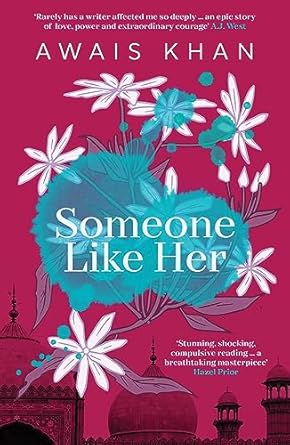4 Stars
This novel focuses on two women and the time they spent in Saigon in 1963 at the dawn of the Vietnam War. The young, shy, and insecure Patricia is newly married to Peter, “a civilian advisor.” She desperately wants a family but in the meantime is focused on being a helpmeet for her husband. Charlene is her foil: a mother of three and a confident, take-charge dynamo, she manipulates Patricia into helping with her many charity projects which prove to be well-meaning but misguided.
Patricia is exactly the type of wife society expected at that time. She is loyal and dutiful, focused on catering to Peter’s needs. Though educated, she does little of consequence: writing letters, shopping, attending lectures and cocktail parties, taking afternoon naps, and making herself pretty for her husband. Certainly the verb obey was part of her marriage vows; Charlene points out that Patricia won’t go to church without her husband’s permission. She asks few questions and, in fact, doesn’t even know exactly what Peter’s job is.
What stands out about Patricia is her naivety and trust in her husband. She encounters a young girl in agony with burns, but only years later makes the connection between her odd burns and the use of napalm. There’s a very revealing comment she makes at one point, talking both about her Catholic faith and American support for a Catholic regime in Vietnam: “our sense that we were a part of the one true faith was pretty solid in those days. Or maybe I should say that mine was solid because I so trusted my husband to be right.” Of course, she is not the only naïve one: “Whatever mention these women made of the days they’d all spent as dependents in Vietnam was usually of the little did we know sort.”
Charlene, on the other hand, is the spunky rebel. Obviously intelligent and ambitious but with no career into which she could channel her energy, she devotes herself to helping the Vietnamese: she raises money to distribute gifts to hospitals and even visits a leper colony. Patricia thinks that the term “’white savior’” is an apt description of Charlene. She wants to do something “’to stand against that very little evil – that impulse to turn away.’” The problem is that Charlene’s altruistic ventures are not well thought out. She just plows ahead without giving consideration to what the people really need or want. Certainly, she never asks.
Her altruism is suspect. The reader will remember what Patricia is told by a friend’s aunt: “’self-sacrifice is never really selfless. It’s often quite selfish.’” So it’s logical to wonder whether Charlene is doing good deeds to really help people or to help herself. Is she trying to repair the world or mend herself? Certainly, her ego and status get a boost from her acts. Because of her position and lifestyle, certainly a contrast to that of the Vietnamese, does she feel an obligation to help or is she trying to assuage some sense of guilt? Her polar opposite is Dominic, especially when the reader learns about his son Jamie.
She has no difficulty using people for her schemes; for instance, she sees a maid’s skills as a seamstress and immediately coerces her into sewing áo dái, Vietnamese tunics, to dress Barbies. The maid, whose name is Ly but Charlene always calls Lily, is never asked what she thinks of this idea of Saigon Barbies or if she wants to help. And Charlene’s plan to encourage Americans to adopt Vietnamese children is as morally questionable as Canada’s Sixties Scoop involving Indigenous children.
Patricia does experience some personal growth. At the end of her sojourn in Saigon, she expresses anger at “everyone in my life who had considered my opinions inconsequential, who had lied to me or ignored me or manipulated me for what they considered my own benefit . . . those who’d set out to do good on my behalf.” Peter and Charlene both treat her this way so her anger is justified, but how much more so is that of the Vietnamese people, the recipients of Charlene and Patricia’s “efforts at inconsequential good”?
Of course, Charlene’s misguided altruism parallels the mistakes of American involvement in Vietnam. Convinced she knows what is good for the people, she just moves ahead without consultation, just as the American government, seeing Vietnam’s reunification as a strategic and economic disaster, justified its presence with anti-communism rhetoric and downplayed protests, like the self-immolation of Buddhist monks, against the increasingly unpopular Diệm regime. And until the end, Patricia accepts Charlene’s explanations, just as Americans accepted their government’s.
This is a complex novel which offers much for the reader to ponder: the conflict between societal expectations and personal desires, the meaning of genuine altruism, the unintended consequences of good intentions, and a country’s need for absolution for past actions. It would not suffer from a second reading. My only hesitation is that I found reading it a struggle at times; the pace is slow and parts are repetitious.
Note: I received an eARC from the publisher via NetGalley.








